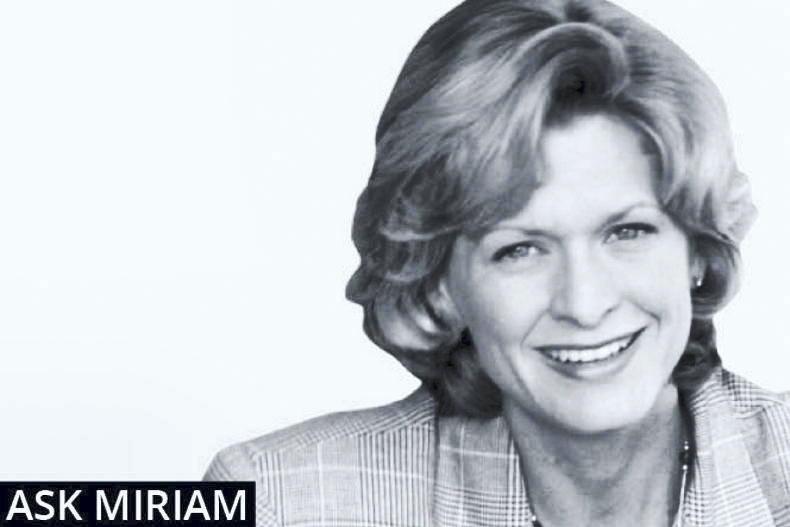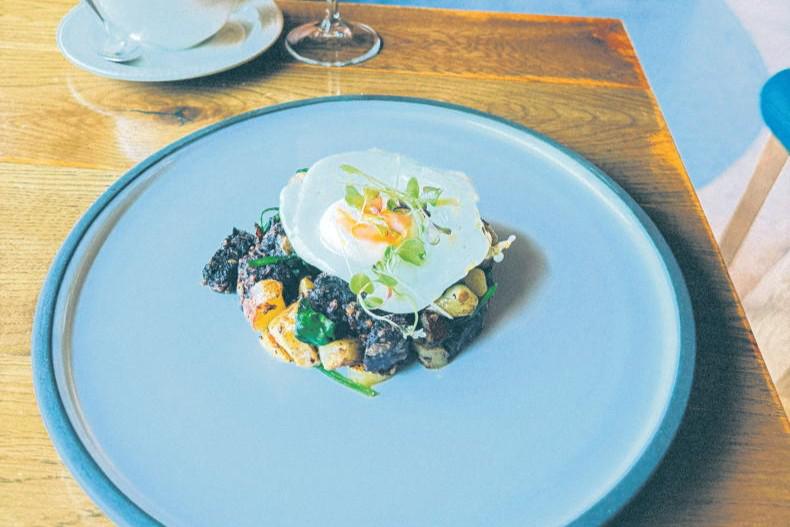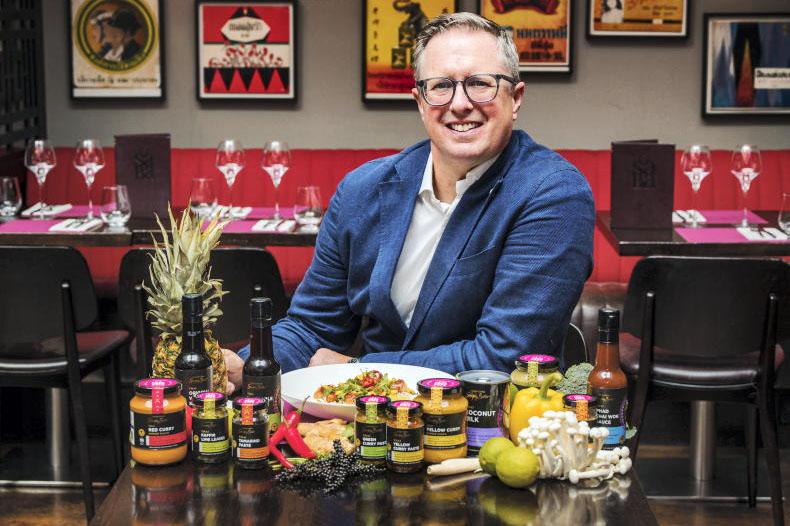Chef Paula McIntyre is a true Northern Ireland food ambassador. Her BBC 1 Northern Ireland food show, Paula McIntyre’s Hamely Kitchen, features traditional Ulster Scots recipes with a modern approach; making use of the great food producers around her Co Derry locality.
In this programme, Paula’s roots are on full display, but at the heart of everything is her balanced approach to hospitality: keeping things simple, using great ingredients and supporting your community through the foods you purchase and eat. She believes in keeping traditions, but not stressing yourself out.
While her parents – both teachers – loved to eat and were, in her words, “adventurous” with food, Paula still grew up eating lots of traditional recipes.
“My mother always had really good ingredients in the house; there was always good vegetables and meat,” she tells Irish Country Living. “I had an aunt who was a really good cook and who taught cooking. My mother and granny would both have baked - soda bread, soda farls, potato bread, traybakes – the traybakes, not so much my mom, but definitely my relatives.”
Keep it simple
When she left home to train as a chef (first in Belfast and then in the United States), she felt the food she had grown up with was “plain” compared to what she was learning in culinary school. Having helped prepare Christmas dinner at home since the age of 11, she hilariously recalls the first Christmas she took on the turkey after going to college.
“Traditionally it would have had to be turkey and ham and you never deviated,” she explains. “The first year I went to cooking school, I was 18, and I had learned how to bone out a turkey. I did that whole thing where you have the turkey, [then] the duck, chicken and a quail chicken mousse inside. And my god – you’d think I had murdered somebody! They just wanted turkey and it was like I had ruined Christmas!”
While Paula still does the “traditional Christmas” at home, she has also enjoyed Christmas in other places and appreciates different cultural approaches to the holidays – especially ones which put less pressure on the cook.
Christmas lasagne
“One of the nicest Christmases I ever had was spent in Italy with friends; they do the feast of the seven fishes on Christmas Eve and then they do a big lasagne on Christmas Day. For me, the Christmas Dinner in this country can be a bit much – too stressful – for a lot of people.
“This year, I’m going to cook everything on Christmas Eve, I’m going to slice it all up and do it the way they do it in hotels and get it out all ready to go! Just the roasties have to be done on the day.”
Happy Hogmanay
Paula’s next episode of Hamely Kitchen will be her Hogmanay Special, which airs at 7:30pm on 30 December. During the episode, she will make roasted duck with a burnt apple sauce and potato pancakes fried in duck fat. This is her second series of Hamely Kitchen. She says she had taken a more achievable approach with her season two recipes.
“What’s been lovely with this last series is people are saying to me, ‘Oh, I cooked that!’” she smiles. “We brought back recipes like Queen of Puddings, but using gingerbread and pears. We did a bread and butter pudding with Veda bread (a Northern Irish soft malt bread) and I flavoured it with a spiced rum from Carrickmore (Íon Distillery). And we featured older recipes, like rousel bread (a potato bread, but with
oats in it). It’s very traditional. I did it in the style of a taco, with beef
cheek.”
Paula’s Tips for a Food
Safe Christmas
Research from Safefood indicates 39% of those surveyed are concerned about getting Christmas dinner right this year – whether that means cooking their turkey to the right temperature or buying the right quantity of food to avoid excessive food waste. The cost of Christmas dinner is also a concern for many this year.
Paula has worked in professional kitchens for many years and offers some tips on staying food safe this Christmas. For more information, including Safefood’s ‘Trust the Meat Thermometer’ campaign, visit safefood.ie.
1. We’re all buying more food than usual at this time of year. The problem is, we cram it all into the fridge which can bring down its temperature. If you don’t have one, it’s a good time to buy a fridge thermometer to ensure it stays a safe temperature for storing food (your fridge should always be 3°C or 4°C).
2.Buy a temperature probe for roasting meats (like your Christmas turkey). A good one costs less than €10/£10 but what you’re really buying is peace of mind. For poultry, stick the probe in the deepest part of the thigh and look for a reading of 75°C. Do the same to the breast.
3. Smart fridge storage: in a commercial kitchen, you wouldn’t dream of keeping raw meats near your smoked salmon and parma ham! Store raw foods like that down at the bottom of the fridge, while ready to eat foods should go on top.
4. Warmer winters: When Paula was growing up she says they would often keep the turkey out on the front porch (“because it was like a morgue”), but it’s warmer now at Christmas and it’s no longer safe to do this. You want meat to be kept somewhere where their internal temperature will be less than 5°C.
5. If you’re planning to brine your turkey, understand that while brining it also has to be refrigerated. This means you need adequate space at the bottom of your fridge for the brining container to fit.
Read more
Passing on holiday traditions can be part of creating your own food community
Causeway Coastal Christmas
Chef Paula McIntyre is a true Northern Ireland food ambassador. Her BBC 1 Northern Ireland food show, Paula McIntyre’s Hamely Kitchen, features traditional Ulster Scots recipes with a modern approach; making use of the great food producers around her Co Derry locality.
In this programme, Paula’s roots are on full display, but at the heart of everything is her balanced approach to hospitality: keeping things simple, using great ingredients and supporting your community through the foods you purchase and eat. She believes in keeping traditions, but not stressing yourself out.
While her parents – both teachers – loved to eat and were, in her words, “adventurous” with food, Paula still grew up eating lots of traditional recipes.
“My mother always had really good ingredients in the house; there was always good vegetables and meat,” she tells Irish Country Living. “I had an aunt who was a really good cook and who taught cooking. My mother and granny would both have baked - soda bread, soda farls, potato bread, traybakes – the traybakes, not so much my mom, but definitely my relatives.”
Keep it simple
When she left home to train as a chef (first in Belfast and then in the United States), she felt the food she had grown up with was “plain” compared to what she was learning in culinary school. Having helped prepare Christmas dinner at home since the age of 11, she hilariously recalls the first Christmas she took on the turkey after going to college.
“Traditionally it would have had to be turkey and ham and you never deviated,” she explains. “The first year I went to cooking school, I was 18, and I had learned how to bone out a turkey. I did that whole thing where you have the turkey, [then] the duck, chicken and a quail chicken mousse inside. And my god – you’d think I had murdered somebody! They just wanted turkey and it was like I had ruined Christmas!”
While Paula still does the “traditional Christmas” at home, she has also enjoyed Christmas in other places and appreciates different cultural approaches to the holidays – especially ones which put less pressure on the cook.
Christmas lasagne
“One of the nicest Christmases I ever had was spent in Italy with friends; they do the feast of the seven fishes on Christmas Eve and then they do a big lasagne on Christmas Day. For me, the Christmas Dinner in this country can be a bit much – too stressful – for a lot of people.
“This year, I’m going to cook everything on Christmas Eve, I’m going to slice it all up and do it the way they do it in hotels and get it out all ready to go! Just the roasties have to be done on the day.”
Happy Hogmanay
Paula’s next episode of Hamely Kitchen will be her Hogmanay Special, which airs at 7:30pm on 30 December. During the episode, she will make roasted duck with a burnt apple sauce and potato pancakes fried in duck fat. This is her second series of Hamely Kitchen. She says she had taken a more achievable approach with her season two recipes.
“What’s been lovely with this last series is people are saying to me, ‘Oh, I cooked that!’” she smiles. “We brought back recipes like Queen of Puddings, but using gingerbread and pears. We did a bread and butter pudding with Veda bread (a Northern Irish soft malt bread) and I flavoured it with a spiced rum from Carrickmore (Íon Distillery). And we featured older recipes, like rousel bread (a potato bread, but with
oats in it). It’s very traditional. I did it in the style of a taco, with beef
cheek.”
Paula’s Tips for a Food
Safe Christmas
Research from Safefood indicates 39% of those surveyed are concerned about getting Christmas dinner right this year – whether that means cooking their turkey to the right temperature or buying the right quantity of food to avoid excessive food waste. The cost of Christmas dinner is also a concern for many this year.
Paula has worked in professional kitchens for many years and offers some tips on staying food safe this Christmas. For more information, including Safefood’s ‘Trust the Meat Thermometer’ campaign, visit safefood.ie.
1. We’re all buying more food than usual at this time of year. The problem is, we cram it all into the fridge which can bring down its temperature. If you don’t have one, it’s a good time to buy a fridge thermometer to ensure it stays a safe temperature for storing food (your fridge should always be 3°C or 4°C).
2.Buy a temperature probe for roasting meats (like your Christmas turkey). A good one costs less than €10/£10 but what you’re really buying is peace of mind. For poultry, stick the probe in the deepest part of the thigh and look for a reading of 75°C. Do the same to the breast.
3. Smart fridge storage: in a commercial kitchen, you wouldn’t dream of keeping raw meats near your smoked salmon and parma ham! Store raw foods like that down at the bottom of the fridge, while ready to eat foods should go on top.
4. Warmer winters: When Paula was growing up she says they would often keep the turkey out on the front porch (“because it was like a morgue”), but it’s warmer now at Christmas and it’s no longer safe to do this. You want meat to be kept somewhere where their internal temperature will be less than 5°C.
5. If you’re planning to brine your turkey, understand that while brining it also has to be refrigerated. This means you need adequate space at the bottom of your fridge for the brining container to fit.
Read more
Passing on holiday traditions can be part of creating your own food community
Causeway Coastal Christmas










SHARING OPTIONS